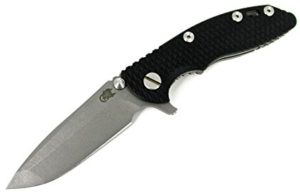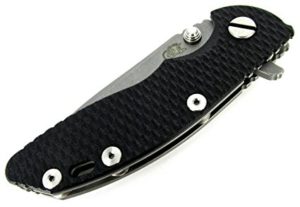Tools That Keep Your Blades RAZOR SHARP: Knife Sharpeners Explained
Knives are a staple in every kitchen, and since you are reading this from a knife enthusiast website, it is probably a staple item that you regularly carry in your pocket. However, to get the most out of your knives they must be kept sharp and in working-condition. There are several different main types of knife sharpeners available and each has its pros and cons. In this article, we will discuss the most popular types of knife sharpeners. These sharpeners consist of electric, hand-held, belt, and manual sharpeners. Alright, let’s get into it and learn about each type of knife sharpener, how to properly sharpen using each system, and how they can help keep your knives in tip-top form.
Electric Knife Sharpener
An electric knife sharpener is a plug-in or battery-powered machine that helps you to sharpen knives quickly and easily. Electric sharpeners come in various forms, from standalone units to ones that mount on a kitchen countertop using suction cups or rubber feet.
Pros:
Quick and easy to use
Can be used by beginners
Allows for consistent sharpening
Can be used on a variety of blade shapes and sizes
Cons:
Can wear out the blade quickly if used too frequently
May not be suitable for knives with a thin or delicate edge
May not be suitable for knives with a very high carbon content
Hand-Held Knife Sharpener
The humble hand-held, pull-through sharpener is THE most popular knife sharpening system on the market. These are small, handheld devices that feature a set of steel rods that you pull your knife through to sharpen it. They’re easy to use, require no specialty skills or training, and they’re perfect for a quick touch-up. Unfortunately, they can remove a lot of material from your blade and can damage the edge, particularly if the knife has a specialty grind.
Pros:
Portable
Easy to use
Ideal for On-The-Go (OTG) use
Can be used on a wide variety of blade geometries and sizes
Cons:
Can wear down the blade quickly if used incorrectly
May not be suitable for knives with a delicate or thin edge
May not be suitable for beginners who are just learning how to sharpen knives
Belt Knife Sharpening System
Pros:
More robust than hand-held sharpeners
The most versatile machine to use with a variety of blade shapes and sizes
Ideal for sharpening multiple blades in a short period of time
Allows for consistent sharpening
Cons:
Can be expensive
May not be suitable for beginners who are just learning how to sharpen knives
Can take up a lot of space on a tabletop surface
Uses much more energy than other methods
Stone Knife Sharpeners
This is the most traditional way of sharpening a knife blade. They come in a range of grits and can be used to achieve a razor-sharp edge. The main pros are that they’re very effective, they can be used to sharpen any type of knife, and they’re ideal for real-deal knife enthusiasts who want to take their sharpening skills to the next level. The cons are that they require skill, time, and practice to use properly and they can also be quite messy to use (Especially with oil).
Whetstones (Waterstones)
Pro: Easy to use and allows for the ability to get extremely sharp edges.
Con: Requires some skill and practice to use successfully and requires routinely flattening the stone.
Diamond Stones
Pro: Fast and efficient, with very long-lasting sharpening surfaces.
Con: Higher cost and can be too aggressive for certain types of steel.
Arkansas Stones
Pro: Easier to use than most sharpening stones.
Con: Can be slow to use and may not remove as much steel as other types of stones.
Oil Stones
Pro: Fast and smooth way to sharpen a knife.
Con: Can require frequent soaking to maintain lubrication and can also be quite messy to use.
Honing Rods
Another popular sharpening method is to use honing rods. These are straight rods made from steel or ceramic that you use to align the edge of your knife. By running your knife along the honing steel, you can remove any minor deformations or unaligned sections on the blade and improve the edge’s cutting ability. The pros are that they require almost no skill or training, they’re perfect for everyday use, and they’re very gentle on your blade. The cons are that they can only be used on certain types of knives and they won’t help if your knife is already dull. This is more of an edge-touch-up tool instead of a ‘sharpener.’
Pro: Simple to use and can quickly touch-up a dulling edge.
Con: Typically takes longer to use and may not be suitable for certain types of steel.
Conclusion:
Overall, the best choice of knife sharpener depends on your needs and preferences. If you are looking for the best overall sharpening system, a pull-through or belt sharpener is most likely your best option. Those looking for a fine, smooth edge will probably enjoy a whetstone, while diamond stones may be the best choice for those seeking fast and efficient sharpening. Arkansas stones and oil stones, while popular for their affordability, are not the very efficient or practical for most users. At the end of the day, the key is to find a sharpening system that meets your specific needs. Thanks for reading!









